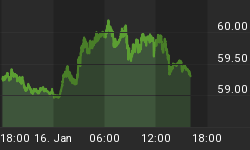Times are tough in farm country. Really tough. Whereas many sectors of the U.S. economy are enjoying a sustained boom, many farmers are facing a very different reality.
America's farmers are living through one of the worst economic crises in recent memory thanks to a perfect storm of low commodity prices, record flooding and trade wars that are pushing thousands of farmers to the brink.
According to a report by the Bloomberg citing Commerce Department data, personal income of U.S. farmers declined by an annualized $11.8 billion during the first quarter of the year, the biggest first quarter drop in 3 years.
Record bankruptcies
The Midwest has been particularly badly hit, with farmer bankruptcies in the region hitting decade-high levels thanks mainly to record flooding caused by heavy rain and thawing snowpacks.
Weakened rural economies such as Wisconsin’s are the ones facing the full brunt of the crisis, with New York Times columnist, Paul Krugman, declaring they are faced with ‘‘powerful economic forces that nobody knows how to stop."
Last year, Wisconsin’s economy was devastated after losing nearly 700 dairy farms, with dairy herds plummeting to just 8,000, or 40 percent less than decade-ago levels. The state’s dairy industry is critical for its economy, generating $43.4 billion a year in economic activity including supporting 413,500 jobs, or nearly 12 percent of the state’s employment. Overproduction and failing export markets have decimated the U.S. daily industry in general since 2014.
Making matters even worse for these unfortunate farmers is the fact that they are getting little help with government subsidies failing to make a meaningful long-term impact. Last year, the Trump administration unveiled a $12-billion subsidy plan meant to be a trade war bailout after countries like China responded to Trump’s tariffs with new taxes on products like hogs and soybeans. But these were just short-term subsidies that may fail to outlast a long-drawn trade war between Washington and Beijing.
Related: Goldman Suddenly Goes Cold On Commodities
In February, NBC News reported that the USDA had already paid out $7.7 billion, or nearly two-thirds, of those subsidies leaving farmers with little recourse going forward. On Monday, White House economic adviser Larry said that he was ‘‘cautiously optimistic’’ about a trade war truce adding that the coming two weeks will offer more clarity.
What’s different this time
Downturns in farming are normal and many farmers have almost come to expect them. So what’s so different this time around?
The farm credit crisis of the mid-1980s is perhaps the best-known after sky-high interest rates and low commodity prices connived to trigger historic attrition rates with nearly 6,000 farmers filing for bankruptcy under Chapter 12. Last year’s bankruptcy tally of 498, therefore, appears tame in comparison.

(Click to enlarge)
Source: MarketWatch
Looking at the sector’s key metrics by the end of last year would even suggest that things have been quite rosy for U.S. farmers. The percentage of non-real estate non-performing farm loans stood at just 1.66 percent, marginally higher than the 2012-2013 boom-time rates when farm incomes and many crop and cattle prices hit 40-year highs.
Ratio of debt-to-assets in 2018 clocked in at 13.5 percent, quite close to the 11.3 percent ratio reported for 2012.
Yet, that would be glossing over the fact that the first few months might already have set the wheels in motion and many farmers might soon reach breaking point if the triple whammy of trade wars, inclement weather and waning subsidies carry on for much longer. Farm profitability in 2018 was $63 billion, the second lowest figure in a decade which already sets the tone for a downturn. Farmers could be structured to ride these waves out, but only for so long.
By Alex Kimani for SafeHaven.com

















